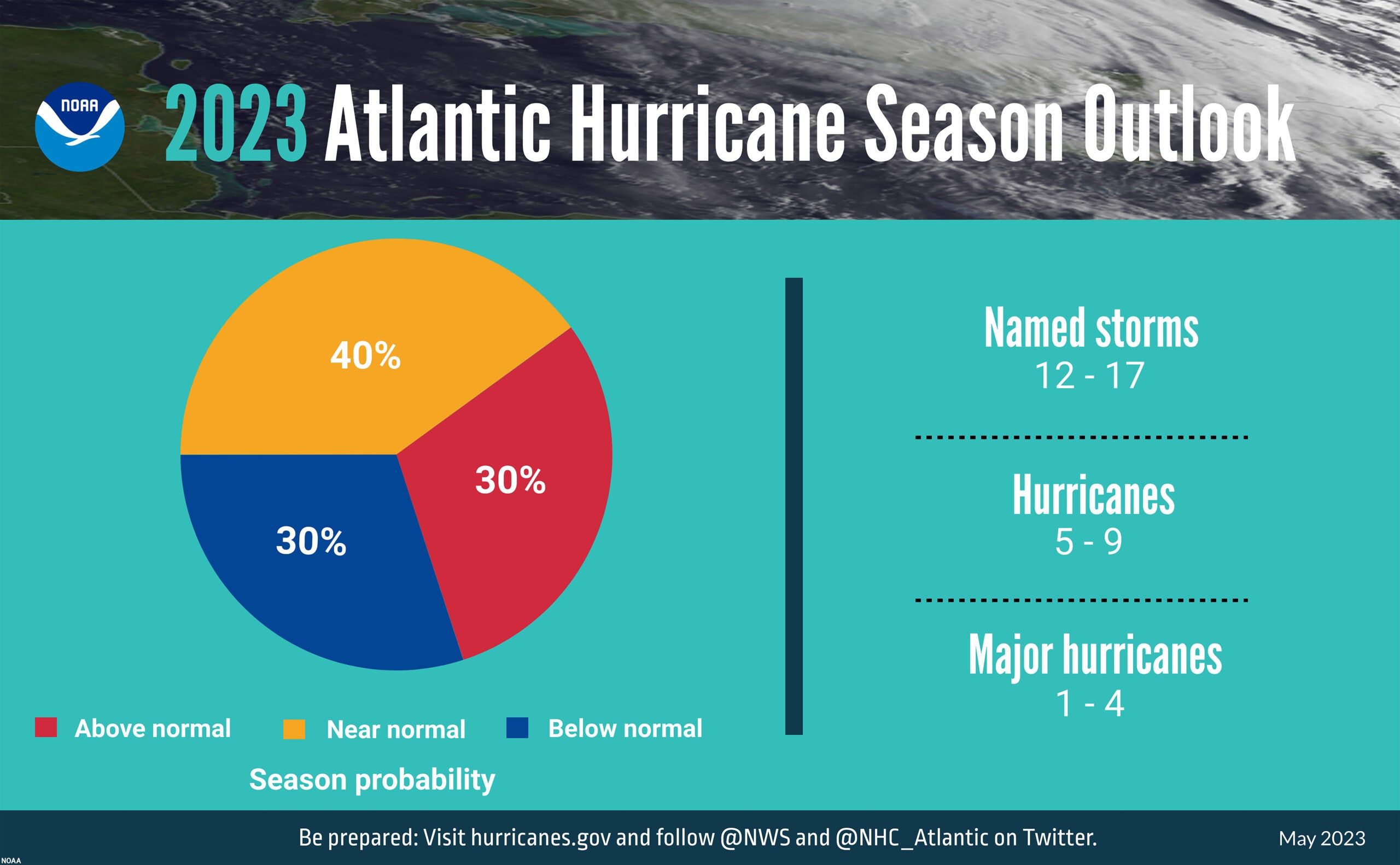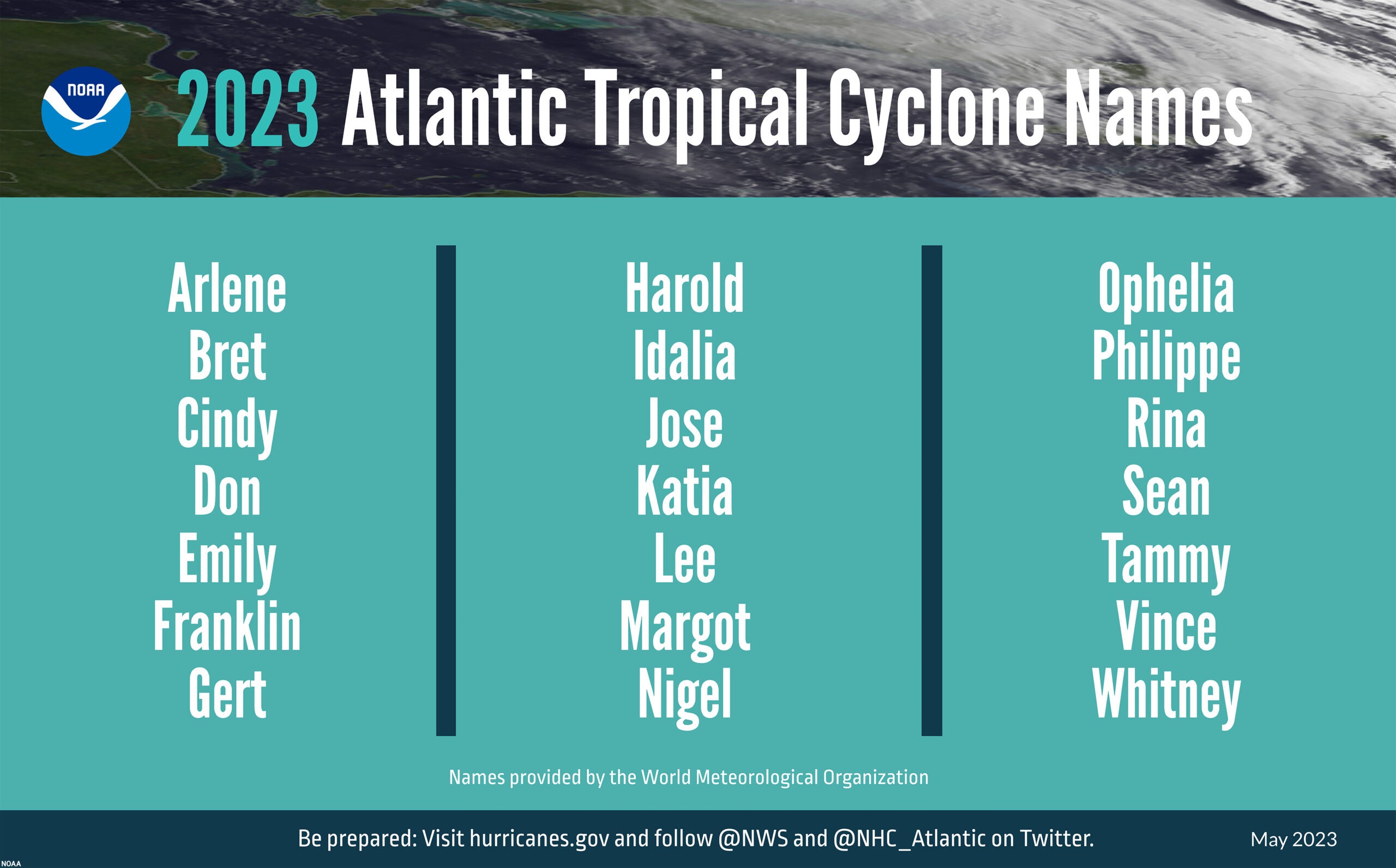Editor’s note: This story is continually updated.
With Memorial Day travel this weekend, summer has unofficially begun. Though summer doesn’t technically begin until late June, hurricane season officially starts June 1.
Even so, there’s some good news. The National Oceanic and Atmospheric Administration’s Climate Prediction Center says the U.S. is likely to experience a “near-normal” hurricane season this year.
One small storm can wreak havoc with your vacation plans, so let’s talk about when hurricanes can get in your way and how to protect your scheduled trips.
Hurricane season outlook for 2023

On May 25, the NOAA’s Climate Prediction Center predicted a 40% chance of a near-normal hurricane season across the Atlantic Ocean, with a 30% chance of an above-normal season and a 30% chance of a below-normal season.
In its report, meteorologists said they expect anywhere from 12 to 17 total named storms. A storm must exhibit winds of 39 miles per hour or higher in order to be worthy of a name. Of that batch of storms, five to nine could become hurricanes with winds of 74 miles per hour or higher, including one to four storms that could grow into major Category 3, 4 or 5 hurricanes with winds of 111 miles per hour or more.
NOAA pegged its predictions with a 70% confidence rate.
“After three hurricane seasons with La Nina present, NOAA scientists predict a high potential for El Nino to develop this summer, which can suppress Atlantic hurricane activity,” according to NOAA. “El Nino’s potential influence on storm development could be offset by favorable conditions local to the tropical Atlantic Basin.”
When is hurricane season?
Atlantic hurricane season starts June 1 and ends Nov. 30, though hurricanes can happen outside those dates.
Hurricanes can also happen in the Pacific Ocean, and Eastern Pacific hurricane season spans from May 15 through Nov. 30. Storms in this region affect travel to the Mexican Riviera, such as Los Cabos, Mazatlan, Puerto Vallarta, Acapulco and Ixtapa.
Hurricanes can also hit Hawaii, typically between June and the end of November, with storms most likely occurring between July and September. Storms like this occur in the Southern Hemisphere and are known as cyclones. Peak cyclone season for Australia and New Zealand is March and April.
Is my vacation destination safe from a hurricane?
Atlantic hurricanes usually start in the Caribbean, power through toward the Bahamas and then hit the U.S., including Florida, Louisiana, Alabama and Texas.
Hurricanes have affected northern destinations such as Cape Hatteras, North Carolina; New York; New Jersey; and even Canada.
Hurricanes are normally stronger in the Eastern Caribbean. The peak hurricane season for this area is middle August through September, while the Western Caribbean tends to see more storms from mid-September through early November.
Cruise itineraries can be affected by hurricane season too.
Hurricane lingo

If you have vacation plans in the hurricane zone during hurricane season, keep an eye on weather conditions. As your vacation dates approach, check the weather forecast to determine if bad weather may be an issue.
As you watch the news, parse the information through this lens:
- Tropical depression: A weather event with a sustained surface wind speed of 38 miles per hour or less.
- Tropical storm: A storm with winds ranging between 39 and 73 miles per hour.
- Hurricane: A storm with sustained surface winds of 74 miles per hour or more.
- Hurricane watch: Sustained winds of 64 knots (74 miles per hour) or higher are possible within the specified area.
- Hurricane warning: Sustained winds of 64 knots (74 miles per hour) or higher are expected somewhere within the specified area.
- Major hurricane: A hurricane classified as a Category 3 or higher.
For more, see the National Hurricane Center’s glossary of hurricane-related terms.
Trip insurance
If you book travel to a destination during hurricane season that could be affected by a storm, consider your protection options. You can pay for third-party travel insurance, rely on credit card protection or self-insure if you decide that the cost of the trip is low enough to lose what you paid.
Remember that most travel insurance policies don’t cover trip cancellation if you preemptively cancel your trip because the weather forecast looks dismal. In most cases, the storm would need to be named, and you would’ve had to purchase your insurance before the storm got to named status.
If you’re worried about the possibility of bad weather ruining your trip, buy the cancel for any reason add-on for your insurance policy. While this can be expensive, it might be right for your situation. You can compare trip insurance prices with and without the CFAR add-on at portals such as InsureMyTrip or SquareMouth.
Bottom line
In some good news, NOAA expects the upcoming Atlantic hurricane season to be less active than we’ve seen in recent years.
NOAA will update its 2023 outlook in early August when hurricane season peaks.
Related reading:
- Cruising during hurricane season: What to know — and should you go?
- Post-hurricane recovery: Fort Myers beaches open for spring break visitors
- TPG’s comprehensive guide to independent travel insurance
- The best travel insurance policies and providers
- When to buy travel insurance versus when to rely on credit card protections
- Why you might want to get a premium credit card instead of purchasing travel insurance
- The 9 best credit cards with travel insurance
Previous reporting by Andrea Rotondo.

Leave a comment